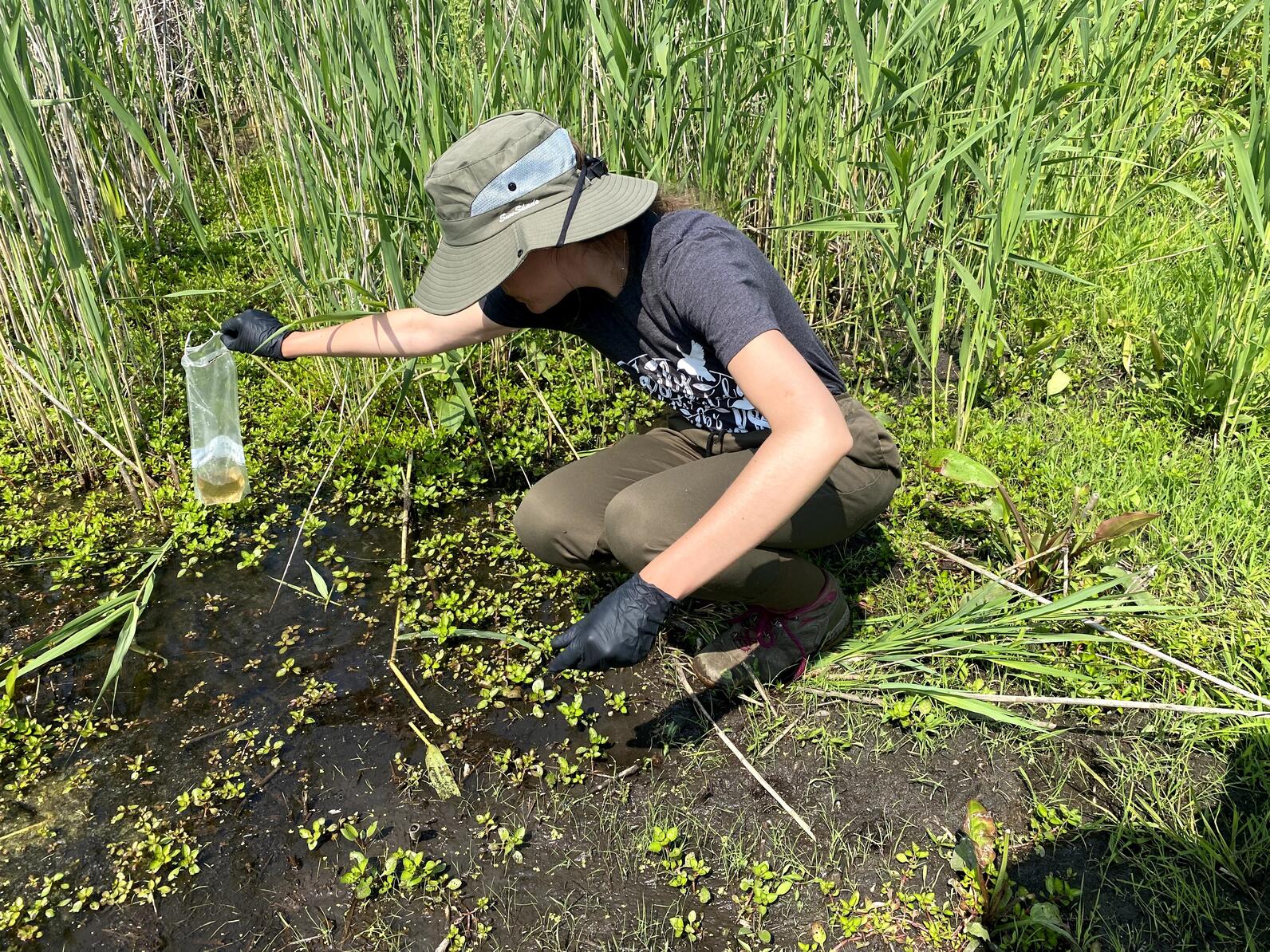INDIANA - (August 26, 2024) Audubon Great Lakes, in partnership with the Indiana Department of Natural Resources (DNR), Indiana Audubon Society, and University of Illinois Urbana-Champaign (UIUC), is utilizing new technology and techniques to monitor endangered marsh birds across Indiana.
Many marsh birds have experienced significant population declines due to the loss of healthy wetlands throughout Indiana. To understand population trends and inform conservation strategies to help bring birds back, Audubon Great Lakes is testing new tools: Autonomous Recording Units (ARUs) and environmental DNA (eDNA) metabarcoding, which could help revolutionize how these birds are monitored and protected, helping to recover declining populations.
“Marsh birds prefer to stay hidden. Historically, we’ve only been able to monitor them by visiting their habitat, playing a recording of their call, and waiting to see if they call back,” said Stephanie Beilke, Senior Manager, Conservation Science at Audubon Great Lakes. “With marsh bird populations in decline, and many species in Indiana endangered, we need all the data we can get. These new tools could help us better understand where these birds are frequenting, how their populations are faring, and their habitat needs so that we can better protect them.”
Over the past two years, Audubon Great Lakes and partners conducted a first-of-its-kind study to test the efficacy of monitoring marsh birds using ARUs and eDNA. The project team deployed ARUs and collected eDNA water samples at 20 locations across nine wetlands that either had significant marsh bird populations or the potential for restoration.

ARUs are small battery-powered and water-proof devices that automatically detect and record bird songs and calls. They are set-up to record when marsh birds are most active, 30 minutes before sunrise to three hours after sunrise. Researchers run the recordings through Cornell’s BirdNET, a research platform that can identify bird sounds.
Environmental DNA (eDNA) sampling is an emerging technique that tracks the presence of animals by analyzing habitat samples for bits of DNA. Birds release feathers, shed skin cells and other materials that contain DNA into their environment, including local wetlands. By collecting and analyzing the DNA present in water samples from these wetlands, researchers can determine which birds are frequenting an area.
“eDNA allows us to detect the presence of sensitive species of greatest conservation need in a very passive way,” said Anastasia Rahlin, Associate Research Scientist of Ornithology at University of Illinois at Urbana-Champaign. “We can now detect these species without direct physical, behavioral or habitat disturbance.”

Indiana’s marsh birds are at-risk. Indiana ranks fourth among states with the greatest loss of wetlands. Six species of marsh birds that depend on wetlands are state-endangered, including the Virginia Rail and King Rail.
“We are thrilled to have partnered with Audubon Great Lakes on this study, as it will help us maintain our long-term marsh bird monitoring program for years to come,” says Allisyn-Marie Gillet, State Ornithologist at Indiana Department of Natural Resources. “Audubon Great Lakes will use these data to inform habitat restoration efforts that we and other land managers in Indiana can undertake to support our endangered marsh birds.”
This study is the first of its kind to compare both of these state-of-the art monitoring methods against traditional volunteer-led surveys. Indiana’s statewide marsh bird monitoring program, which Audubon Great Lakes helped launch in 2018, currently relies on trained volunteer community scientists to survey marsh birds. Volunteers coordinated by Indiana Audubon and Indiana DNR participate by getting up before sunrise to look and listen for secretive marsh birds, using a targeted audio-playback recording of focal marsh bird species’ calls.
“Our dedicated group of volunteer monitors are the backbone of our Marsh Bird monitoring program,” said Beilke. “We’re hopeful that eDNA and ARUs can help fill data gaps when volunteers and staff are unable to be in the field.”
Data collection across Indiana was completed in June 2024, and ARUs have been retrieved from all monitoring points. Habitat data were also collected at all sites to better understand which habitat characteristics marsh birds favor, which could help inform habitat management recommendations for state endangered species such as the King Rail. Data analysis will begin this winter and study results are forthcoming.
The project is funded by the federal State Wildlife Grant Program, administered by the Indiana DNR and the U.S. Fish and Wildlife Service.
About Audubon Great Lakes
Audubon Great Lakes is a regional office of Audubon, learn more at gl.audubon.org and follow us on Facebook, Twitter and Instagram.
The National Audubon Society protects birds and the places they need, today and tomorrow. Audubon works throughout the Americas using science, advocacy, education, and on-the-ground conservation. State programs, nature centers, chapters, and partners give Audubon an unparalleled wingspan that reaches millions of people each year to inform, inspire, and unite diverse communities in conservation action. A nonprofit conservation organization since 1905, Audubon believes in a world in which people and wildlife thrive.





